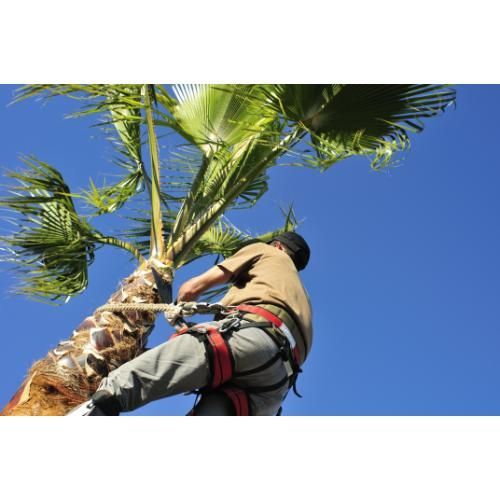How to Maintain Healthy Palm Trees in Los Angeles, California: Essential Tips and Practices
Maintaining healthy palm trees in Los Angeles requires attention and care tailored to the local climate. You can ensure your palms thrive by providing consistent moisture, especially during the dry months and cooler winter seasons. Regularly checking for signs of stress, such as browning leaf tips or slow growth, is essential for their well-being.

Essential Care for Healthy Palm Trees
in Los Angeles
Maintaining healthy palm trees in Los Angeles involves understanding the unique climate, soil needs, proper irrigation, fertilization, and regular maintenance practices. This knowledge will help ensure your palms thrive in the city’s environment.
Understanding Los Angeles Climate
Los Angeles has a Mediterranean climate characterized by warm, dry summers and mild, wetter winters. While most palm trees can tolerate these conditions, the cooler months can cause stress if not properly managed.
During winter, you should monitor temperatures, especially during cold snaps. It’s important to provide protection to sensitive species from chilling winds or frost. This can be accomplished by wrapping them in burlap or using frost cloths if required.
Soil Requirements and Preparation
Palm trees thrive in well-drained soil with good organic content. Before planting, assess your existing soil. Ideal soil should have a pH between 6.0 and 7.5. If your soil is too compacted or clay-heavy, consider adding sand or organic compost to enhance drainage.
Preparing the planting area involves removing weeds and debris. Dig a hole twice the width of the root ball but no deeper than the ball itself. This helps the roots establish more easily and spread outwards.
Irrigation Strategies
Irrigation is crucial for palm health, especially during summer. Newly planted palms require more frequent watering to establish roots. Aim for deep watering about once or twice a week, depending on the weather.
For mature palms, adjust your watering schedule based on rainfall. The soil should remain consistently moist but not waterlogged. A drip irrigation system offers precise control, reducing water waste and preventing root rot.
Proper Fertilization Techniques
Fertilization is key to sustaining the health of your palm trees. Use a slow-release fertilizer designed specifically for palms, containing essential nutrients like potassium, magnesium, and micronutrients.
Apply fertilizer during the growing season, typically in spring and early summer. Follow the manufacturer’s instructions regarding application rates. Avoid fertilizing late in the season to prevent new growth from damaging during winter.
Pruning and Maintenance Best Practices
Regular pruning helps maintain the aesthetic appeal and health of your palm trees. Schedule a trimming every 12 to 18 months to remove dead fronds and any diseased material. This keeps the tree looking its best and promotes better air circulation.
Be sure to use clean, sharp tools to prevent spreading disease. Avoid over-pruning, as palms need a certain number of fronds for healthy growth. Lastly, monitor your palms for any signs of pests or diseases, addressing issues promptly to maintain optimal health.
Common Palm Tree Problems
and Solutions
Maintaining healthy palm trees involves addressing various challenges, including pest infestations, diseases, nutrient deficiencies, and recovery from extreme weather. Focusing on these specific issues can help you keep your palms thriving in Los Angeles.
Preventing Pest Infestations
Pests can severely affect the health of your palm trees. Common culprits include aphids, spider mites, and palm weevils.
To prevent infestations:
- Regular Inspections: Examine your trees bi-weekly for early signs of pests.
- Diatomaceous Earth: Apply this natural powder around the base of the palm to deter crawling insects.
- Beneficial Insects: Introduce ladybugs and lacewings, which can control pest populations naturally.
If you notice an infestation, treat it promptly with insecticidal soap or horticultural oil. Following this approach can reduce the risk of severe damage to your trees.
Disease Control and Management
Diseases can impact palm trees, mostly targeting weakened specimens. Root rot, caused by overwatering, is a prevalent issue in palms.
To manage disease:
- Proper Watering: Ensure the soil has good drainage. Water only when the top inch of soil feels dry.
- Fungicide Treatments: If you suspect disease, apply an appropriate fungicide to affected areas.
- Sanitation: Remove dead or diseased fronds to prevent the spread of pathogens.
Being vigilant and proactive can support the health of your palms and help them recover from potential diseases.
Addressing Nutrient Deficiencies
Nutrient deficiencies can lead to poor growth and discoloration, particularly yellowing leaves. Recognizing the symptoms is crucial.
To address deficiencies:
- Soil Testing: Conduct periodic soil tests to identify nutrient levels and pH.
- Balanced Fertilizers: Use a palm fertilizer high in potassium, magnesium, and iron. These nutrients promote robust health and vibrant color.
- Application Timing: Fertilize in the spring and summer when palm trees are actively growing.
Regular nutrient management helps keep your palm trees healthy and resilient against other stressors.
Recovery Care After Extreme Weather Events
Los Angeles is prone to extreme weather, impacting palm trees. It is essential to address any fallout from such events promptly.
For recovery:
- Assess Damage: After storms or high winds, check for broken or damaged fronds.
- Pruning: Trim any broken fronds to prevent disease and encourage new growth.
- Watering: Provide sufficient hydration, especially if rain was insufficient after the event.
Taking these steps will help your palm trees recover faster and maintain their health in the face of challenging weather conditions.




